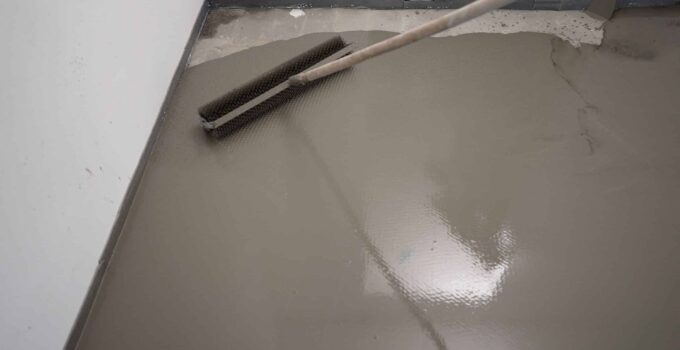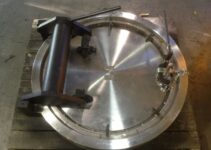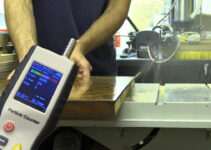A level floor is the unsung hero of any construction or renovation project. Whether you’re installing flooring, cabinets, or countertops, an uneven surface can lead to a cascade of issues and costly adjustments. Traditionally, leveling compounds have been the go-to solution for achieving that smooth and even base. However, what if we told you there are alternative methods that can save you time, money, and hassle? In this comprehensive guide, we’ll explore a variety of alternative solutions to level a floor, empowering you to make informed decisions and take control of your next project.
Self-Leveling Underlayment
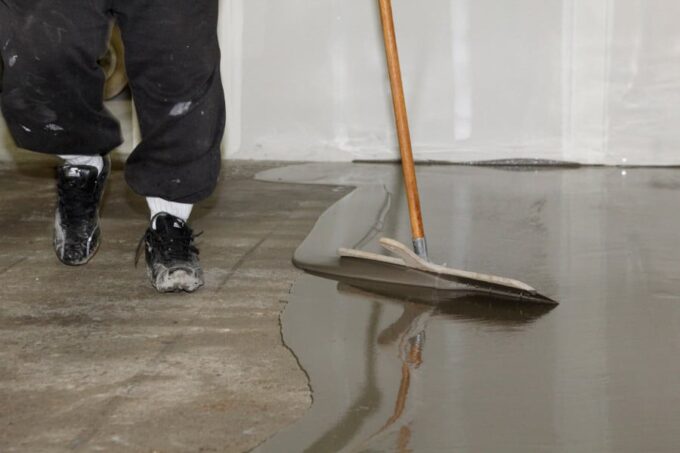
While leveling compounds have long been the default choice for achieving a level floor, a formidable contender has emerged: self-leveling underlayment. This innovative approach brings a host of advantages to the table. Notably, it requires minimal labor, making it an attractive option for DIY enthusiasts and professionals alike. The speedy drying times are a boon, allowing you to progress swiftly through your project.
Self-leveling underlayment boasts the ability to seamlessly cover expansive areas, resulting in a uniform surface. However, as with any solution, it comes with its own set of drawbacks, which we’ll delve into. By comprehending the nuanced pros and cons, you’ll be empowered to make an informed decision regarding whether self-leveling underlayment aligns with the unique requirements of your project.
Plywood Subfloor
For those who relish a hands-on approach and seek to master the art of leveling, adding a plywood subfloor is a tried-and-true method. This technique has withstood the test of time, reliably providing a level foundation even in the face of the most uneven surfaces. In this section, we offer you a comprehensive roadmap to success. We’ll not only detail the essential materials and tools you’ll need but also provide step-by-step instructions, demystifying the installation process. Our tips, garnered from years of experience with floor leveling concrete contractors, will arm you with the knowledge to navigate potential pitfalls with ease. Whether you’re embarking on a renovation project or starting from scratch, this method can be the bedrock upon which you build a level floor, ensuring stability and peace of mind for years to come.
Shimming and Joist Adjustments
When facing a floor with structural issues like uneven joists or sagging beams, shimming and joist adjustments can be your salvation. These methods rectify the root causes of unevenness. We’ll not only guide you through the process but also provide insights into determining when it’s best to employ this technique. Additionally, we’ll share invaluable tips to guarantee the long-term stability and levelness of your floor. With shimming and joist adjustments, your floor will stand the test of time, free from the shackles of unevenness.
Grinding and Sanding
Achieving a level floor isn’t always about adding materials; sometimes, it’s about skillfully subtracting excess. Enter grinding and sanding, two techniques that breathe new life into uneven surfaces. We’ll delve into the equipment you’ll require, along with crucial safety precautions to ensure a smooth and safe journey. Our step-by-step instructions will walk you through the process, allowing you to transform imperfections into a perfectly level canvas. Whether it’s concrete or wood, grinding and sanding can sculpt your floor into a work of art.
Floor Leveling Compounds
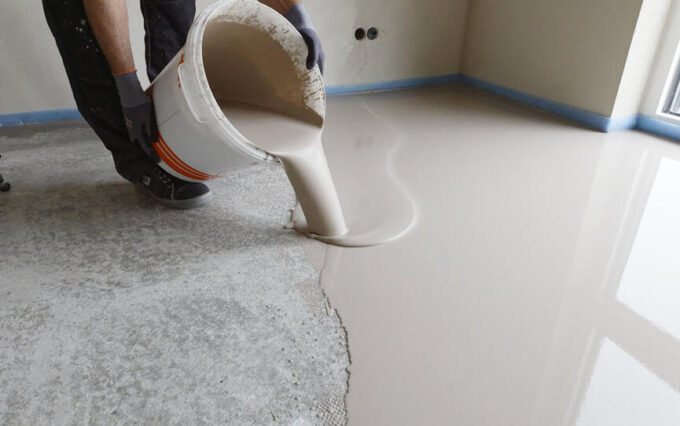
Source: pci.at
While we explore alternatives to traditional leveling compounds, it’s vital to recognize that these compounds still have a vital role to play. We’ll discuss the different varieties available, from self-leveling to patching compounds, and elucidate when they remain the ideal choice. Understanding their nuanced applications is key to making an informed decision. This comprehensive look at leveling compounds ensures you’ll know precisely when to turn to these trusty solutions.
Using Floor Patching Materials
When time and budget are tight, and your project faces minor imperfections, floor patching materials are the cavalry riding to the rescue. In this section, we’ll break down the types of materials at your disposal and their versatile applications. We provide clear guidelines for their proper application, ensuring a swift and cost-effective solution to your leveling challenges. With floor patching materials, you can bridge imperfections without breaking the bank.
Cork Underlayment
For eco-conscious individuals, cork underlayment presents a sustainable alternative with leveling benefits. We’ll unearth the myriad benefits of cork underlayment, exploring scenarios where it shines. Delve into the installation process, and discover that going green doesn’t mean sacrificing quality. This section not only champions environmentally responsible choices but also provides insights into cork’s longevity and ease of maintenance, making it a win-win for both your project and the planet.
DIY Concrete Overlay
Yearning for the sleek, modern aesthetic of polished concrete? The DIY concrete overlay is your passport to a level floor with contemporary panache. We’ll outline the materials and tools you’ll need, demystify the application process, and provide step-by-step instructions for achieving that sought-after polished look. This unique solution combines aesthetics and function, giving you the power to transform your floor into a polished masterpiece.
Wood Shims and Screws

Source: bhg.com
Wood shims and screws may seem humble, but their effectiveness in leveling specific areas is nothing short of remarkable. Explore when and where to deploy this method effectively, and unlock the secrets to stability and durability. With the right techniques and a touch of craftsmanship, wood shims and screws can take your uneven floor and turn it into a solid, level foundation.
Floating Floors
Float into a world of innovation with floating floors, encompassing laminate and engineered wood solutions. We’ll not only introduce you to the concept but also delve into the diverse types available and their suitability for different projects. Walk through the installation process, where the magic of “floating” ensures levelness and stability. We’ll also highlight key maintenance considerations to keep your floating floor looking pristine for years to come.

Conclusion and Decision-Making
As we wrap up our exploration of alternative floor leveling solutions, we’ll provide a concise summary of the methods discussed. We encourage you to evaluate your specific project requirements, budget, and timeline before selecting a leveling method. Making an informed choice can lead to smoother, more successful construction and renovation endeavors. Whether you opt for self-leveling underlayment, shimming, or any other method, remember that a level floor is not just a surface; it’s a solid foundation for your dreams.

